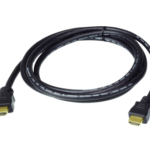Here are some tips for creating the best office environment for video editing:
- High-Performance Computer and Monitor: Video editing requires a high-spec computer and a large monitor. Opt for a computer with powerful CPU and GPU, paired with a monitor of at least 27 inches with high resolution. This enhances workflow and allows for detailed visual editing.
- Quiet Workspace: Video editing demands concentration, so a quiet environment is essential. Choose a quiet office or a secluded workspace if possible.
- Comfortable Chair and Desk: A comfortable chair and desk promote efficient work during long editing sessions. Opt for an ergonomic chair that supports the spine and a desk that provides ample space.
- Lighting: Proper lighting is crucial for visual editing tasks. Utilize natural light as much as possible and install additional lighting in the workspace if needed. Bright lighting enables detailed editing and reduces eye strain.
- Adequate Rest Space: Video editing often involves long hours of work, so having a space for adequate rest and relaxation is important. Maintain a balance between work and rest to foster creativity and efficiency.
- Backup and Storage Space: To protect important project files, ensure you have safe backup and storage space. Use external hard drives or cloud storage to regularly backup files.
- Sound Management: Accurate audio processing is crucial during video editing. Work in a quiet environment and use headphones or speakers to monitor audio as needed.
Creating such an office environment enhances efficiency and quality in video editing, enabling greater creativity and concentration in your work.

good monitor for video editing
Here are 10 monitor brands ideal for video editing, along with their key features:
- Dell UltraSharp Series
- Features: High resolution, wide color gamut, accurate color reproduction.
- LG UltraFine Series
- Features: High resolution, HDR support, excellent color accuracy.
- Asus ProArt Series
- Features: Accurate color reproduction, wide color gamut, hardware calibration support.
- BenQ SW Series
- Features: Excellent color reproduction, hardware calibration, eye-care technology.
- EIZO ColorEdge Series
- Features: Precise color adjustment, hardware calibration, long-term stability.
- HP DreamColor Series
- Features: Accurate color reproduction, wide color gamut, uniform brightness.
- Apple Pro Display XDR
- Features: High resolution, HDR support, wide color accuracy, exceptional brightness.
- ViewSonic VP Series
- Features: Accurate color reproduction, wide color gamut, various connectivity options.
- NEC MultiSync Series
- Features: Accurate color reproduction, excellent uniformity, various sizes and resolutions.
- Samsung Odyssey G7
- Features: High refresh rate, high resolution, curved display, HDR support.
These monitor brands offer features such as high resolution, accurate color reproduction, HDR support, and hardware calibration, making them suitable for efficient video editing tasks.
Best video editing tool top10
Here are the top 10 video editing tools for video editors:
- Adobe Premiere Pro
- Industry-standard software offering a wide range of features and professional editing tools.
- Final Cut Pro X (Apple)
- Powerful video editing software for Mac users, providing an intuitive user interface and high-performance features.
- DaVinci Resolve (Blackmagic Design)
- Offers powerful features including color grading and online editing, with even the free version providing robust capabilities.
- Avid Media Composer
- Widely used in the professional film and broadcast industry, providing advanced editing features.
- Sony Vegas Pro
- Windows-based video editing software offering a range of editing features and effects, known for its user-friendly interface.
- HitFilm Pro
- Integrates video editing, VFX, and compositing into one software, offering various creative capabilities.
- Lightworks
- Provides both free and paid versions, offering professional editing features.
- Filmora (Wondershare)
- Simple video editing software with an intuitive user interface and a variety of effects and templates.
- CyberLink PowerDirector
- Windows-based video editing software known for its ease of use and powerful features, including a variety of effects and templates.
- VEGAS Pro (Magix)
- Successor to Sony Vegas Pro, offering convenient usability and advanced features.
These video editing tools cater to various needs and preferences, allowing users to choose based on their skill level and project complexity.
Good stretching and eye massages for video editors’ eye fatigue
Here are some stretching and eye massage techniques that are good for relieving eye strain for video editors:
Eye Stretching:
- 20-20-20 Rule: Every 20 minutes, take a break from looking at the computer screen and focus on something at least 20 feet (about 6 meters) away for 20 seconds.
- Eye Circles: Rotate your eyes in a circular motion, five times clockwise and five times counterclockwise.
- Palming: Rub your hands together to generate heat and gently cup your palms over your closed eyes without applying pressure. Relax in this position for a minute or two.
Eye Massage:
- Gentle Tapping Around Eyes: Use your fingertips to lightly tap around your eyes, starting from the inner corner, across the eyebrows, and down to the temples.
- Circular Motion Massage: Using your index or middle fingers, gently massage around your eyes in a circular motion, moving from the inner corner of the eye to the outer corner.
- Eye Socket Massage: With your index or middle fingers, gently press and massage the area around your eye sockets in small circular motions, starting from the bridge of your nose and moving outward.
These stretching and massage techniques can help alleviate eye strain and maintain eye health. Remember to take regular breaks, practice good ergonomics, and maintain proper lighting in your workspace to reduce eye fatigue during long editing sessions.



